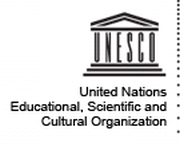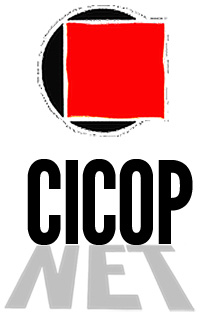Biennal of Restoration
Between ORVIETO and FIRENZE will be held
on October 15-28, 2011 the
1st

How to participate
With the patronage of
 Commissione Nazionale Italiana
Commissione Nazionale Italiana










The Biennal of Architectural and Urban Restoration
is an international and interdisciplinary cultural event promoted by
CICOP – Italia
with the support of CICOP International Federation
(International Centers for the Conservation of Architectural Heritage)
Non-governmental organization established in Orvieto on October 8, 1994
registered office at via G. Carducci, n.3 and operation office at University of Florence, Faculty of Architecture
Information:
Email: brau@cicop.it
Fax: 0763 610242
Why the Biennal
No institutionalized site a present exists where experimental projects in the field of architectural restoration and the reorganization of existing cities can be permanently compared and verified on an international scale. The Biennial therefore makies it possible to have a considered exposition of the interventions effected or in course, dealing with themes of a cultural nature and theorical definition, as well as aspects concerning the use of technologies and the evaluation of the valences and residual characteristics of the architectural patrimony.
An important field deals with the requalification and reinvention of architectural and urban spaces, from a point of view closely bound to the regional characteristics and the correct use of local resources.
Why Orvieto
For the past fifteen years an important operation of environmental and urban restoration has been in course in this city, carried out with public funding, of European as well as national relevance, for financial contributions have also come from the EEC.
An initial tangible result consists in the setting up of the "Observatory of the Rupe of Orvieto", which proposes to control and monitor the phenomena in progress, and analyze the strategies of intervention.
Consequently, those who come to Orvieto from all over the world for the celebration of the Biennial, will find a highly suitable terrain in which to confront their studies and expectations concerning the requalification of the building patrimony, thanks to the experimentation in course here and the rich cultural heritage of Umbria.
Organization of the Biennal Project
This initial hypothesis of the organization of the Biennial provides for theorical-cultural formulation and articulation which gravitates around the managerial technological and economical aspects, with a highly interdisciplinary vision. As far as we know no preceding expository exhibitions have taken the totality of these aspects into consideration.
The character of continuity of the Biennial Project is also important for it makes it possible to create a permanent internationally oriented site for comparison and up dating - as in other sectors of human activity - inexistant up to date , both in Italy and abroad.
Priority thematic areas of the Biennial Project
A. Projects for the Permanent Maintenance of Small Towns.
The rapid changes in the socio-economical scene of Europe and the demographic and geographic transformations today are increasing the discrepancy between the development of human activities and the edified environment, giving rise to different policies of intervention, depending essentially on the economical structure of each country. All the problems which touch on these processes in their complexity, find methods (procedures) and permanent experimental fields in the small towns in whose interest it is to create systems of permanent maintenance of the local building patrimony. In taking note of these prevalent states of affairs, a greater effort must be made for comparison and discussion, on an international level, concerning this field.
B. Interventions of GlobaI RequaIification of Monumental Complexes.

Contrasting reasons and interests have always marked interventions on this patrimony. These include the necessity to an at least partial compliance with the new standards of environmental well being and safety (earthquakes, installation, fire, etc.) which contrast with those of the preservation of the building shell and the structures; or the heated debate concerning the appropriate use of the advanced technologies and/or the reproposing of technologies of the past. The solutions to these and other unsolved problems can spring only from a direct comparison on an intemational scale including all the aspects that condition the decision making process.
C. Strategies for the reappropriation of unused buildings located in urban and extra-urban centers and industrial archaeology.

With reference to the increasing demand for buildings and the demographic and infrastructural transformations of the inhabited centers, a study of global strategies for the reutilization of unused representative or industrial buiidings (cinemas, theaters, artisan and industriai structures, barracks, etc.) has become critical. lt should be based ori a careful interdisciplinary interpretation of the transformation processes of the edified environment. We believe that strategies of reappropriation based ori interdisciplinary approaches, favoring resources and values, cari emerge only through a rich backlog of ideas and obligations, such as that offered by ari international biennial or restoration.
D. Interventions on the building heritage of our century.
The interventiori criteria in this class of buildings are always established on the basis of specific technical and legislative norms, open to question or completely absent, and as a result considerable space is left to private initiatives and gratuitous interpretation.
Nobody expected, moreover, to have to use the buildings in reinforced concrete built immediately after World War Il for more than ten - twenty years; the great post war reconstruction of the 1950s was undertaken in the conviction that soon everything would be redone better and with more modern technologies.
These buiidings, therefore, today are in need of structural restoration, adequate power and heating instaliation and aesthetic improvement which must be carefully regulated, in relation to the economic and technological resources of each country. A comparison on an international level of their residual potenitialities (safety, aesthetic value, tecnological values, ete.) could suggest intervention policies which would rehabilitate not only the buildings themselves, but also restore the local economy.
The differentiated effort expended by the different countries (the poorer ories arid those more advanced) on making these buildings last longer, can give us an idea of the wide range of suggestions and solutions that could emerge from a logical comparison on international scale.

